Coffee: The Good, The Bad, and The Ugly
Coffee: The Good, The Bad, and The Ugly - Waking up to the aroma of freshly brewed coffee is an essential part of practically every household the world over. Nobody gushes over the aroma of tea although there is no dearth of tea drinkers. Coffee holds a very special place in the hearts of people. With the mushrooming of cafes everywhere, the choice has multiplied and ordering a brew can in itself be quite a daunting task.
You are probably familiar with the names of the different types of brews that are offered on the menu but not too familiar with what goes into each mug. Many people are reluctant to try anything new and stick to the first brew they like and find themselves ordering the same all the time. You should try out new concoctions as you just might find some other combination that is richer and tastier.
The Espresso and the Turkish Coffee are very strong and black with no milk or cream. Cafe Latte is Espresso with coffee-flavoured syrup and milk, while Cafe au Lait is double strength with heated milk. Irish Coffee is laced with whiskey and topped with whipped cream and the Machiato is Espresso with a dash of aerated milk. Cappuccino is Espresso with a little milk, and a light sprinkle of spices on top. Cafe Mocha is not what you can call 'real coffee' as it is made of instant coffee, cocoa, and chocolate syrup with a little milk. Although most people prefer their coffee hot, Iced Coffee made with Espresso, whipped cream, and crushed ice, also has a diligent fan following.
There are primarily two types of beans; the Arabica and the Robusta. The Arabica is more expensive and popular because of its rich aroma and flavor. Instant coffee is generally made with Robusta beans as it costs less. If you are a 'real' coffee buff, you will know that the best brew is the one that is made with freshly roasted and ground beans. The way the bean is roasted also influences the final flavour. Freshly roasted beans should be used only after a day if you want the best flavour. It can be stored for a couple of weeks in an airtight glass container.
Coffee is said to bring down several health risks including dementia, Alzheimer's, incidence of cancer, gall stones, tooth decay, gout, etc. It is also said to protect the liver and heart, and acts as a diuretic and laxative. The adverse effects are sleep disturbances, staining of teeth, increase in blood pressure, and is not advised during pregnancy. Interestingly, research shows that females benefit more than men! The key is in drinking it in moderate quantities.
Coffee was first harvested in the Ethiopian highlands as early as the fifteenth century. But it was only the last century that saw it cultivated in Australia. And, only as early as the 1980s with the introduction of mechanical harvesting did cultivation in Australia become truly viable. Northern New South Wales and North Queensland are the coffee growing areas in Australia. Australia produces 200 to 600 tonnes in a year and half of this is exported. Although Australian coffee is touted as entirely organic, increased use of pesticides in the plantations, make it a dubious claim.
The most expensive coffee in the world comes from Indonesia and some parts of Philippines and East Timor. Kopi Luvak, Motit Coffee, Kafe Laku, and Kape Alamid are some of it's more common names. This is produced from the bean that has been eaten by the Asian Palm Civet, passed through its digestive tract, and passed out undigested in its original shape by the civet. These beans are then collected, thoroughly cleaned, dried in the sun, and then lightly roasted to produce the most aromatic and least bitter coffee in the world. The price per kilogram of Kopi Luvak is around US $700! It is also called Weasel Coffee in Vietnam where a chemically stimulated version is produced.
Although brewing your own steaming mug of coffee has its plus points, it is not always feasible. You will agree that sipping an exotic brew in your favourite cafe, with your book or a good friend for company, offers a much more pleasurable experience.

